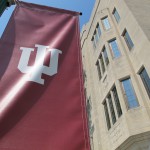Why Declining State Funding At Research Universities Has Scientists Worried
—Ray Bowen, National Science Board
More students are pursuing science and engineering degrees at the nation’s major public research universities at time when per pupil spending on higher education is down in almost every state. From the National Science Board:
Increased enrollment and declining state support have occurred in all sectors of the public higher education system. Public research universities educate and train the majority of our nation’s scientists and engineers. They are contributors to economic development at the local, state, and national levels and represent an essential component of the higher education landscape. A continued decline in state support will negatively impact the ability of these universities to provide quality education and training to a diverse student body and attract and retain the talent needed to maintain the scope and quality of their research efforts.
Enrollment is up 7 percent from 2002 at Purdue-West Lafayette and Indiana University-Bloomington. But per student state funding has decreased 18 percent over the last decade. Indiana ranks 41 overall for spending at major public research universities.
Of course, those figures should come as no surprise to anyone who follows trends in higher education. We’ve written about why state funding cuts are one of many factors driving up the cost of higher education, but the authors of the NSB report make a few interesting points as to why it’s of particular concern to math and science researchers. Here’s some highlights:
- The proportion of students studying science and engineering remained relatively constant from 1972 to 2002 at 33 percent. But that share has increased to 38 percent in the last 10 years, a period when high education appropriations kept pace with inflation in just seven states.
- Public research universities account for only about 10 percent of all four-year colleges and universities but enroll about a third of all first-time, full-time undergraduate students. About 80 percent of minority students enrolled at research schools attend public institutions.
- In 2010, research at public universities led to 2,625 patents and more than 400 new start-up companies. That makes them a major driver of local and state innovation. But the costs of conducting research are higher than ever — about three times as much as they were twenty years ago.
- Of the schools in states that decreased appropriations by more than 10 percent, nearly 88 percent have deferred short-term maintenance projects. That’s likely to result in higher costs in the long run.
- Salary discrepancies could lead to an “outflow of talent” from public institutions to private universities, according to the report. That could leave some areas with less research capacity and push more students out of public schools.


